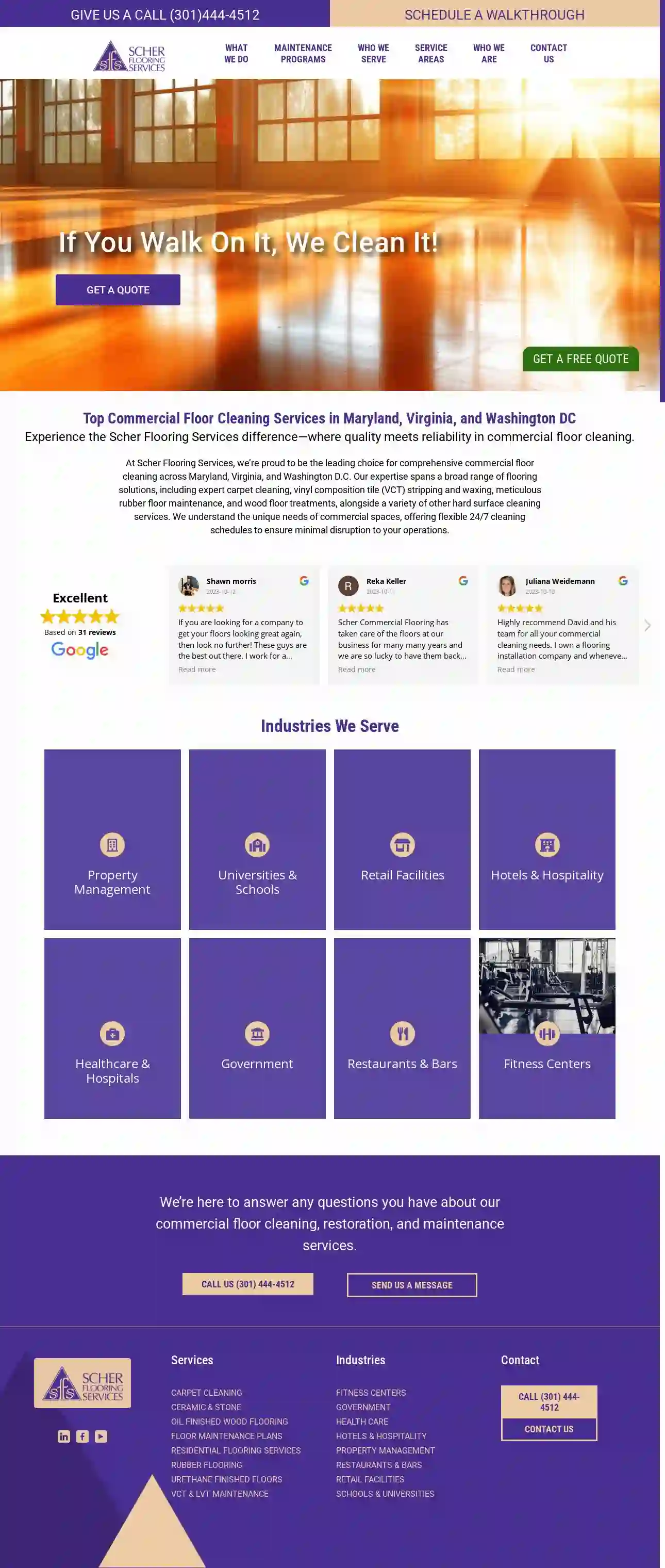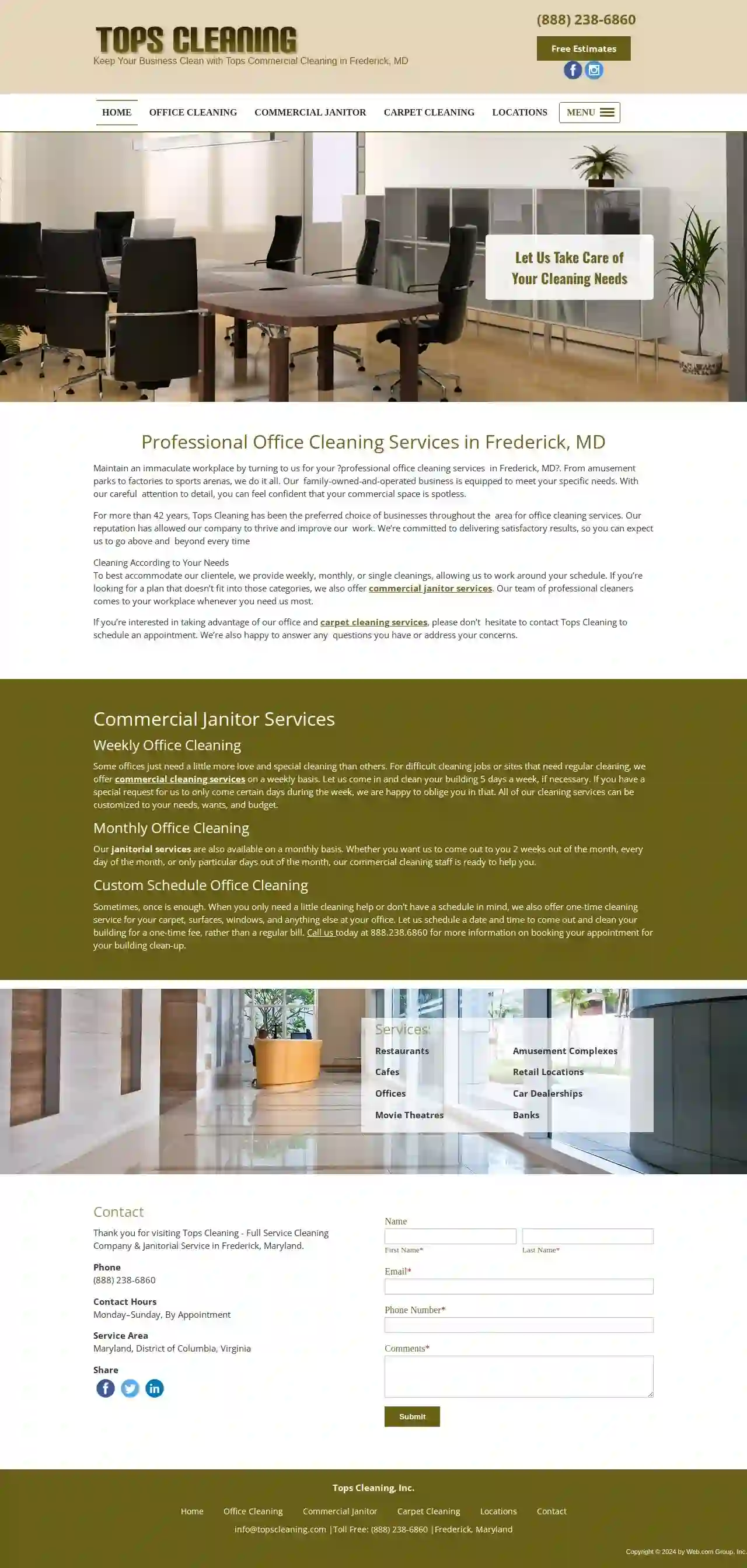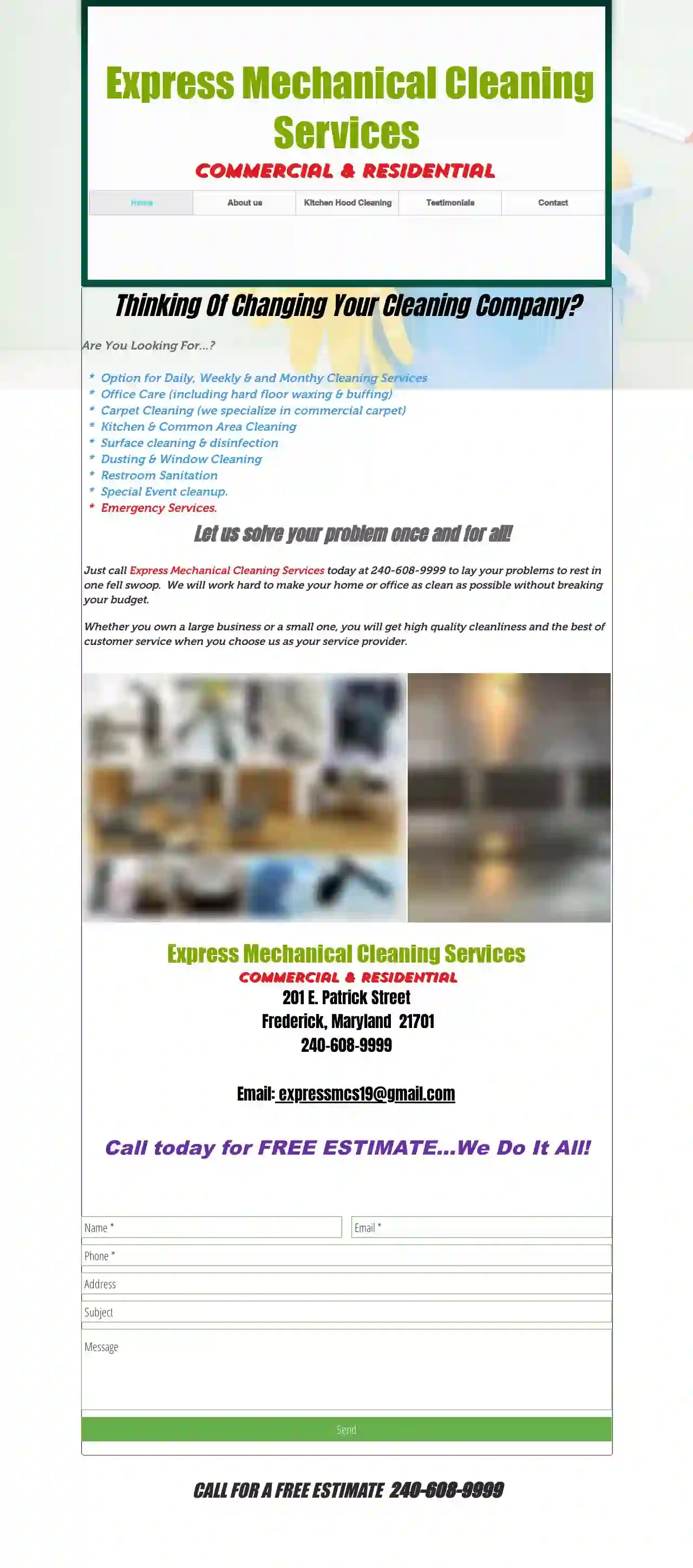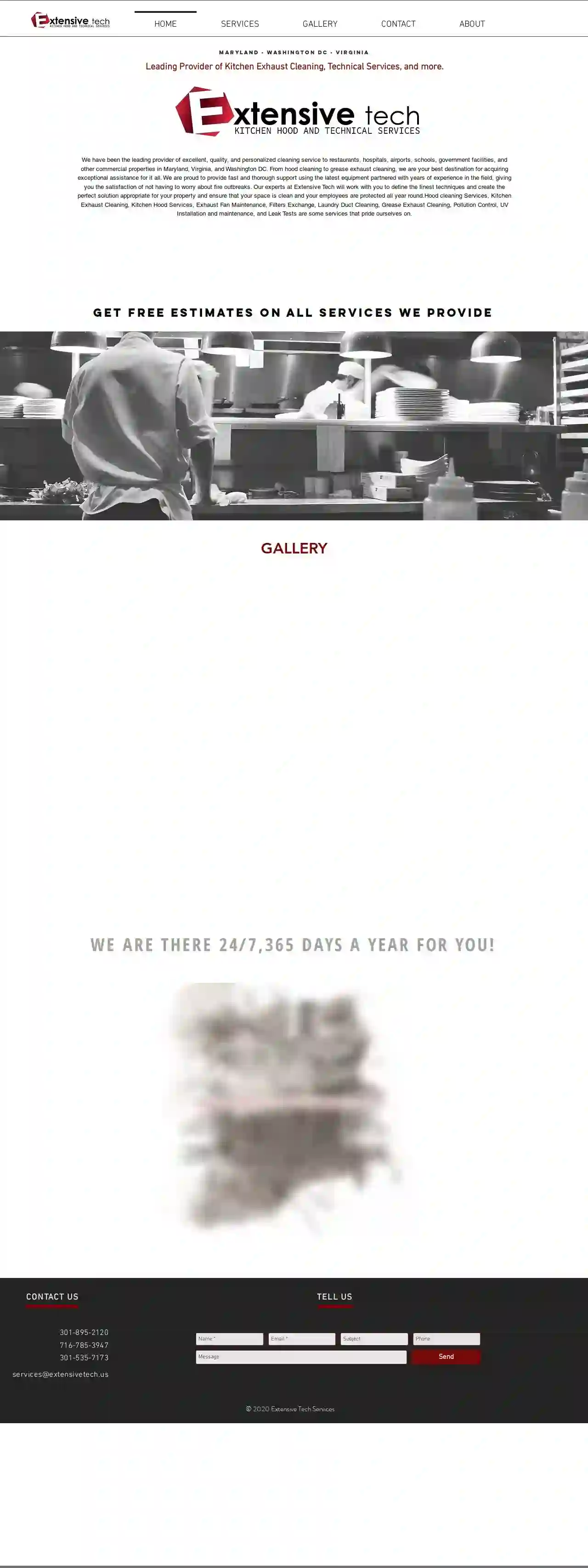Cleaning Services Fallston
Find top Local Cleaners in Fallston
Receive up to 3 Local Cleaners quotes for your project today! Compare profiles, reviews, accreditations, portfolio, etc... and choose the best service.

The Cleaning Authority - Frederick
4.7244 reviews304 S. Jefferson St., Frederick, 21701, USAt The Cleaning Authority - Frederick, we provide detailed house cleaning and sanitizing services for our valued clients across Frederick, Hagerstown, Clarksburg, Middletown, and New Market. Our team is committed to helping our clients with services that are environmentally responsible and effective. Best of all, they are affordable, which means that you can get the luxury of a maid service without breaking the bank. Our unique Detail-Clean Rotation System ensures that your home is cleaned to the highest standard. We use a careful system to deep clean each of your rooms on a rotating basis. This ensures your home is always thoroughly cleaned and sanitized, from the areas you use daily to that hard-to-clean grout!
- Services
- Why Us?
- Gallery
Get Quote
Makro Service Inc
41 reviews15807 Crabbs Branch Way, Rockville, 20855, USMakro Services is a leading provider of facility support services, offering a wide range of solutions tailored to meet the unique needs of clients. With a strong commitment to quality, customer satisfaction, and sustainability, the company has been serving clients in the public and private sectors since 1987. Their services include hospital and medical center cleaning, educational center cleaning, building and condo cleaning, office and public accommodations cleaning, window washing, construction cleaning, upholstery and carpet cleaning, landscaping and maintenance, and pest control. Makro Services is dedicated to providing cost-effective, responsive, and reliable services, ensuring the transfer of liability and insurance costs to the cleaning service contractor and the transfer of management-intensive duties to the service contractor. The company is fully accredited and insured, with a commitment to green cleaning solutions that can be used in part or for all of your cleaning services, based on your business environment and needs. Their certifications ensure that they possess a sustainable business model through which they are committed to providing valuable, long-term service for their customers. With a hands-on approach, Makro Services has earned a reputation for delivering high-quality services to large high-profile buildings.
- Services
- Why Us?
- Accreditations
- Gallery
Get Quote
Scher Commercial Floor Cleaning Services
4.931 reviews123 Main St, Suite 100, Washington, 20001, USScher Flooring Services is the leading choice for comprehensive commercial floor cleaning across Maryland, Virginia, and Washington D.C. With expertise in carpet cleaning, vinyl composition tile (VCT) stripping and waxing, rubber floor maintenance, wood floor treatments, and other hard surface cleaning services, Scher Flooring offers top-notch solutions for all your flooring needs. Their commitment to customer satisfaction and dedication to providing exceptional service has earned them a reputation as a trusted and reliable partner for businesses seeking to enhance the appearance and longevity of their floors.
- Services
- Why Us?
- Accreditations
- Our Team
- Testimonials
- Gallery
Get Quote
Pristine Cleaning Team
55 reviewsFrederick, US- Services
- Why Us?
- Gallery
Get Quote
Tops Cleaning, Inc.
4.812 reviews123 Main St, Frederick, MD, 21701, USTops Cleaning is a family-owned-and-operated business that has been providing professional office cleaning services in Frederick, MD for over 42 years. They offer customized cleaning plans including weekly, monthly, and one-time cleaning services. Their team of professional cleaners is equipped to meet the specific needs of various commercial spaces such as restaurants, amusement complexes, cafes, retail locations, offices, car dealerships, and banks. They serve the areas of Maryland, District of Columbia, and Virginia.
- Services
- Why Us?
- Accreditations
- Our Team
- Testimonials
- Gallery
Get Quote
Express Mechanical Cleaning Services (Specializes in Kitchen Hood Cleaning)
4.819 reviewsFrederick, US- Services
- Why Us?
- Gallery
Get Quote
All Clean Inc.
520 reviewsHagerstown, US- Services
- Why Us?
- Gallery
Get Quote
Extensive Tech Services
4.821 reviewsBaltimore, US- Services
- Why Us?
- Gallery
Get Quote
Maid Brigade of Frederick
4.634 reviewsFrederick, US- Services
- Why Us?
- Gallery
Get Quote- Su
Susana's Cleaning Services
4.825 reviewsFrederick, US- Services
- Why Us?
- Gallery
Get Quote
Over 60,241+ Cleaning Companies in our network
Our cleaning contractors operate in Fallston & beyond!
CleaningMatch has curated and vetted the Best Janitorial Businesses in Fallston. Find the most trustworthy pro today.
Frequently Asked Questions About Cleaning Services
- Communicate clearly: Before the cleaning, communicate your expectations and any specific cleaning requirements. Provide a list of areas you want them to focus on or any tasks you want them to prioritize.
- Provide access: Ensure the cleaners have access to all the areas that need cleaning. Unlock doors, clear clutter, and provide any necessary instructions.
- Walk through after cleaning: Once the cleaning is complete, do a walk-through with the cleaners to inspect their work. Address any concerns or areas that need attention.
- Provide feedback: Give the cleaning service feedback on their performance. Let them know what you were happy with and any areas they can improve.
- Build a relationship: Establish a good relationship with the cleaning service by communicating openly, treating them with respect, and providing clear instructions.
- Declutter first: Before cleaning, declutter surfaces and remove any items that don't belong. This makes cleaning easier and prevents distractions.
- Gather your supplies: Assemble all your cleaning supplies, including cleaners, cloths, sponges, and a trash bag, in a caddy or bucket to avoid wasting time searching for them.
- Work from top to bottom: Start cleaning from the top of each room and work your way down to prevent dust and debris from falling on already cleaned surfaces.
- Focus on high-traffic areas: Pay extra attention to high-traffic areas like kitchens and bathrooms, where dirt and germs accumulate quickly.
- Use the right tools: Utilize appropriate cleaning tools for different surfaces and tasks. Microfiber cloths are effective for dusting and cleaning glass, while scrub brushes are ideal for tough stains.
- Clean in sections: Break down larger tasks into smaller sections to avoid feeling overwhelmed. Focus on one area at a time before moving on to the next.
- Establish a routine: Create a regular cleaning schedule and stick to it. This prevents dirt buildup and makes cleaning more manageable.
- Declutter Regularly: Set aside time regularly to declutter your belongings. Donate, sell, or discard items you no longer use or need.
- Designated Storage: Assign specific storage spaces for different items, such as shelves for books, drawers for clothes, and containers for toys.
- Labeling: Label storage containers and drawers to make it easy to find items and put them back in their designated places.
- 'One In, One Out' Rule: For every new item you bring into your home, get rid of an old one. This prevents clutter from accumulating.
- Vertical Storage: Utilize vertical storage solutions, such as shelves, wall organizers, and hanging racks, to maximize space.
- Digital Organization: Organize digital files and emails to reduce paper clutter. Use cloud storage services to free up space on your computer.
How can I make sure my cleaning service does a good job?
Clear communication, a thorough inspection, and constructive feedback are key to getting the best results from your cleaning service.
What are some tips for cleaning my own home efficiently?
By implementing these strategies, you can clean your home more efficiently and maintain a cleaner and healthier living space.
What are some tips for keeping my home organized and clutter-free?
By adopting these strategies, you can create a more organized and clutter-free home, promoting a sense of calm and efficiency.
Do I need to provide cleaning supplies for the cleaning service?
If you have specific preferences for cleaning products, such as eco-friendly or hypoallergenic options, communicate those to the cleaning service. They may accommodate your requests or allow you to provide your preferred supplies.
How can I make sure my cleaning service does a good job?
- Communicate clearly: Before the cleaning, communicate your expectations and any specific cleaning requirements. Provide a list of areas you want them to focus on or any tasks you want them to prioritize.
- Provide access: Ensure the cleaners have access to all the areas that need cleaning. Unlock doors, clear clutter, and provide any necessary instructions.
- Walk through after cleaning: Once the cleaning is complete, do a walk-through with the cleaners to inspect their work. Address any concerns or areas that need attention.
- Provide feedback: Give the cleaning service feedback on their performance. Let them know what you were happy with and any areas they can improve.
- Build a relationship: Establish a good relationship with the cleaning service by communicating openly, treating them with respect, and providing clear instructions.
Clear communication, a thorough inspection, and constructive feedback are key to getting the best results from your cleaning service.
What are some tips for cleaning my own home efficiently?
- Declutter first: Before cleaning, declutter surfaces and remove any items that don't belong. This makes cleaning easier and prevents distractions.
- Gather your supplies: Assemble all your cleaning supplies, including cleaners, cloths, sponges, and a trash bag, in a caddy or bucket to avoid wasting time searching for them.
- Work from top to bottom: Start cleaning from the top of each room and work your way down to prevent dust and debris from falling on already cleaned surfaces.
- Focus on high-traffic areas: Pay extra attention to high-traffic areas like kitchens and bathrooms, where dirt and germs accumulate quickly.
- Use the right tools: Utilize appropriate cleaning tools for different surfaces and tasks. Microfiber cloths are effective for dusting and cleaning glass, while scrub brushes are ideal for tough stains.
- Clean in sections: Break down larger tasks into smaller sections to avoid feeling overwhelmed. Focus on one area at a time before moving on to the next.
- Establish a routine: Create a regular cleaning schedule and stick to it. This prevents dirt buildup and makes cleaning more manageable.
By implementing these strategies, you can clean your home more efficiently and maintain a cleaner and healthier living space.
What are some tips for keeping my home organized and clutter-free?
- Declutter Regularly: Set aside time regularly to declutter your belongings. Donate, sell, or discard items you no longer use or need.
- Designated Storage: Assign specific storage spaces for different items, such as shelves for books, drawers for clothes, and containers for toys.
- Labeling: Label storage containers and drawers to make it easy to find items and put them back in their designated places.
- 'One In, One Out' Rule: For every new item you bring into your home, get rid of an old one. This prevents clutter from accumulating.
- Vertical Storage: Utilize vertical storage solutions, such as shelves, wall organizers, and hanging racks, to maximize space.
- Digital Organization: Organize digital files and emails to reduce paper clutter. Use cloud storage services to free up space on your computer.
By adopting these strategies, you can create a more organized and clutter-free home, promoting a sense of calm and efficiency.
Do I need to provide cleaning supplies for the cleaning service?
If you have specific preferences for cleaning products, such as eco-friendly or hypoallergenic options, communicate those to the cleaning service. They may accommodate your requests or allow you to provide your preferred supplies.